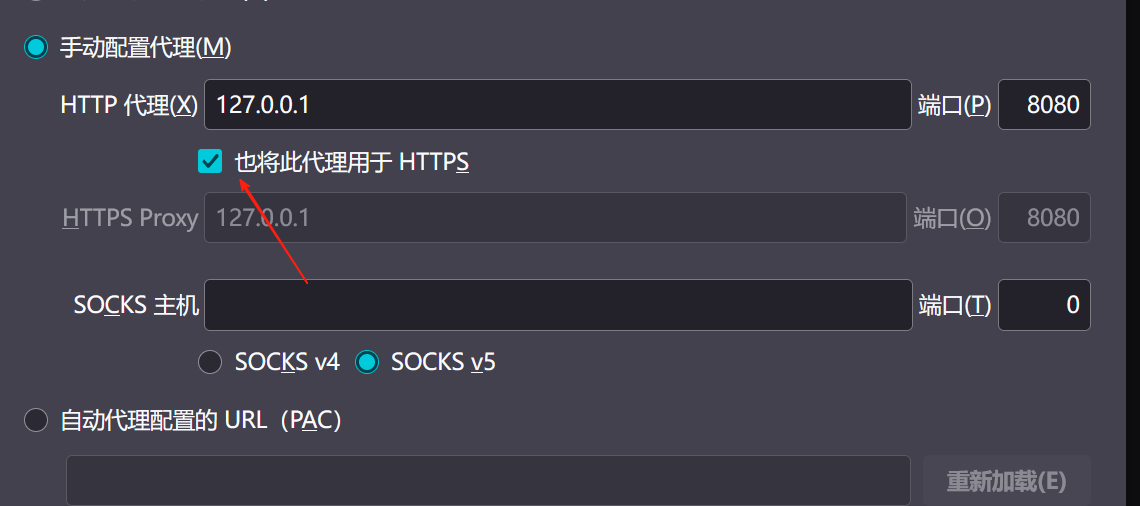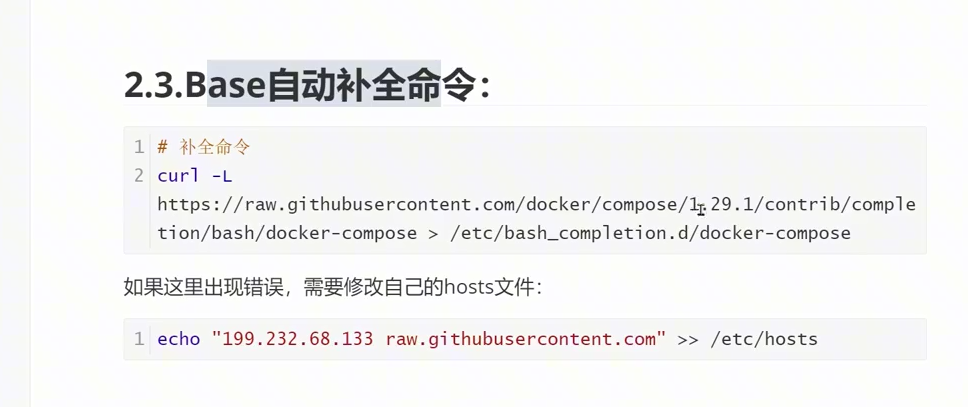[源码解析]socket系统调用上
文章目录
- socket函数API
- 内核源码
- sock_create
- inet_create
- sock_alloc
- sock_map_fd
- 相关数据结构
本文将以socket函数为例,分析它在Linux5.12.10内核中的实现,先观此图,宏观上把握它在内核中的函数调用关系:

socket函数API
socket 函数原型:
#include <sys/socket.h>int socket(int domain, int type, int protocol)
该函数用于创建一个新的socket。
第一个参数:
domain:协议簇,常用的协议簇有:AF_INET, AF_INET6, AF_LOCAL。这个参数决定了socket的地址类型,这个应该很好理解AF_INET用于ipv4地址,AF_INET6用于ipv6地址,AF_LOCAL用于本地进程间通信。
第二个参数:
type:socket类型有好几种,主要是两种:SOCK_STREAM、SOCK_DGRAM(数据报),通俗说就是字节流socket和数据报socket,当你在创建的使用使用哪一种由第二个参数指定。stream socket基于TCP协议,是一个有序、可靠、全双工的字节流通道。datagram socket基于UDP协议,不需要建立和维持连接,可能会丢失或错乱。
第三个参数:
protocol:指定协议,常用协议有IPPROTO_TCP、IPPROTO_UDP、IPPROTO_STCP、IPPROTO_TICP等,分别对应TCP协议,UDP协议,STCP协议,TICP协议。通常这个参数设置为0,表示自适应协议
所以这个函数通常这样用:
int socket_fd = socket(AF_INET, SOCK_STREAM, 0);
在Linux下一个进程默认打开的文件描述符是1024个,也就是说一个进程最多能创建1024个socket,超过就会报Too many open files(这个问题在工作中也会遇到)。通过ulimit命令可以查看到
# ulimit -a
core file size (blocks, -c) unlimited
data seg size (kbytes, -d) unlimited
scheduling priority (-e) 0
file size (blocks, -f) unlimited
pending signals (-i) 29414
max locked memory (kbytes, -l) 16384
max memory size (kbytes, -m) unlimited
open files (-n) 1024
pipe size (512 bytes, -p) 8
POSIX message queues (bytes, -q) 819200
real-time priority (-r) 0
stack size (kbytes, -s) 8192
cpu time (seconds, -t) unlimited
max user processes (-u) 29414
virtual memory (kbytes, -v) unlimited
file locks (-x) unlimited
如果你要修改这个上限到2021个:
# ulimit -HSn 2021
内核源码
//~/linux-5.12.10/include/linux/socket.h 头文件
extern int __sys_socket(int family, int type, int protocol);
socket函数调用结束后,用户层看到返回一个整型的句柄,但是内核在内部会创建一系列的socket相关的内核对象(不是只有一个对象)
// ~/linux-5.12.10/net/socket.c line:1481
/* Mask which covers at least up to SOCK_MASK-1. The* remaining bits are used as flags. */
#define SOCK_TYPE_MASK 0xfint __sys_socket(int family, int type, int protocol)
{int retval;struct socket *sock;int flags;//... 略去参数合法性校验代码retval = sock_create(family, type, protocol, &sock);if (retval < 0)return retval;return sock_map_fd(sock, flags & (O_CLOEXEC | O_NONBLOCK));
}SYSCALL_DEFINE3(socket, int, family, int, type, int, protocol)
{return __sys_socket(family, type, protocol);
}
sock_create
sock_create是创建socket的主要位置,其中sock_create又调用__sock_create
// ~/linux-5.12.10/net/socket.c line:1337
/*
//net_proto_family结构体定义了每一个协议族的新建socket句柄
struct net_proto_family {int family;int (*create)(struct net *net, struct socket *sock,int protocol, int kern);struct module *owner;
};static const struct net_proto_family __rcu *net_families[NPROTO] __read_mostly;
*/
int __sock_create(struct net *net, int family, int type, int protocol,struct socket **res, int kern)
{int err;struct socket *sock;const struct net_proto_family *pf;/** Check protocol is in range*/if (family < 0 || family >= NPROTO)return -EAFNOSUPPORT;if (type < 0 || type >= SOCK_MAX)return -EINVAL;/* Compatibility.This uglymoron is moved from INET layer to here to avoiddeadlock in module load.*/if (family == PF_INET && type == SOCK_PACKET) {pr_info_once("%s uses obsolete (PF_INET,SOCK_PACKET)\n",current->comm);family = PF_PACKET;}err = security_socket_create(family, type, protocol, kern);if (err)return err;/** Allocate the socket and allow the family to set things up. if* the protocol is 0, the family is instructed to select an appropriate* default.*/// 分配socket对象,如果protocol为0 将会被设置合适的协议sock = sock_alloc();if (!sock) {net_warn_ratelimited("socket: no more sockets\n");return -ENFILE; /* Not exactly a match, but its theclosest posix thing */}sock->type = type;#ifdef CONFIG_MODULES/* Attempt to load a protocol module if the find failed.** 12/09/1996 Marcin: But! this makes REALLY only sense, if the user* requested real, full-featured networking support upon configuration.* Otherwise module support will break!*/if (rcu_access_pointer(net_families[family]) == NULL)request_module("net-pf-%d", family);
#endif// 获取每个协议族的操作表rcu_read_lock();pf = rcu_dereference(net_families[family]);err = -EAFNOSUPPORT;if (!pf)goto out_release;/** We will call the ->create function, that possibly is in a loadable* module, so we have to bump that loadable module refcnt first.*/if (!try_module_get(pf->owner))goto out_release;/* Now protected by module ref count */rcu_read_unlock();/// 调用指定协议族的创建函数,对于AF_INET对应的是inet_createerr = pf->create(net, sock, protocol, kern);if (err < 0)goto out_module_put;/** Now to bump the refcnt of the [loadable] module that owns this* socket at sock_release time we decrement its refcnt.*/if (!try_module_get(sock->ops->owner))goto out_module_busy;/** Now that we're done with the ->create function, the [loadable]* module can have its refcnt decremented*/module_put(pf->owner);err = security_socket_post_create(sock, family, type, protocol, kern);if (err)goto out_sock_release;*res = sock;return 0;out_module_busy:err = -EAFNOSUPPORT;
out_module_put:sock->ops = NULL;module_put(pf->owner);
out_sock_release:sock_release(sock);return err;out_release:rcu_read_unlock();goto out_sock_release;
}
inet_create
在 __sock_create 里,首先调用sock_alloc来分配一个struct socket内核对象,接着获取协议族的操作函数表,并调用其create方法。对于AF_INET协议族来说,执行到的是inet_create方法
//~/linux-5.12.10/net/ipv4/af_inet.c
/*
/* This is used to register socket interfaces for IP protocols. */
struct inet_protosw {struct list_head list;/* These two fields form the lookup key. */unsigned short type; /* This is the 2nd argument to socket(2). */unsigned short protocol; /* This is the L4 protocol number. */struct proto *prot;const struct proto_ops *ops;unsigned char flags; /* See INET_PROTOSW_* below. */
};
#define list_for_each_entry_rcu list_for_each_entry#define list_for_each_entry(pos, head, member) \for (pos = list_first_entry(head, typeof(*pos), member); \&pos->member != (head); \pos = list_next_entry(pos, member))*/
static int inet_create(struct net *net, struct socket *sock, int protocol,int kern)
{struct sock *sk;struct inet_protosw *answer;struct inet_sock *inet;struct proto *answer_prot;unsigned char answer_flags;int try_loading_module = 0;int err;if (protocol < 0 || protocol >= IPPROTO_MAX)return -EINVAL;sock->state = SS_UNCONNECTED;/* Look for the requested type/protocol pair. */
lookup_protocol:err = -ESOCKTNOSUPPORT;rcu_read_lock();list_for_each_entry_rcu(answer, &inetsw[sock->type], list) {err = 0;/* Check the non-wild match. */if (protocol == answer->protocol) {if (protocol != IPPROTO_IP)break;} else {/* Check for the two wild cases. */if (IPPROTO_IP == protocol) {protocol = answer->protocol;break;}if (IPPROTO_IP == answer->protocol)break;}err = -EPROTONOSUPPORT;}//...err = -EPERM;if (sock->type == SOCK_RAW && !kern &&!ns_capable(net->user_ns, CAP_NET_RAW))goto out_rcu_unlock;//将 inet_stream_ops 赋值到sock->opssock->ops = answer->ops;answer_prot = answer->prot;answer_flags = answer->flags;rcu_read_unlock();WARN_ON(!answer_prot->slab);err = -ENOBUFS;// 分配sock对象,并把answer_prot赋值到sock->sk_protsk = sk_alloc(net, PF_INET, GFP_KERNEL, answer_prot, kern);if (!sk)goto out;err = 0;if (INET_PROTOSW_REUSE & answer_flags)sk->sk_reuse = SK_CAN_REUSE;inet = inet_sk(sk);inet->is_icsk = (INET_PROTOSW_ICSK & answer_flags) != 0;inet->nodefrag = 0;if (SOCK_RAW == sock->type) {inet->inet_num = protocol;if (IPPROTO_RAW == protocol)inet->hdrincl = 1;}if (net->ipv4.sysctl_ip_no_pmtu_disc)inet->pmtudisc = IP_PMTUDISC_DONT;elseinet->pmtudisc = IP_PMTUDISC_WANT;inet->inet_id = 0;// 对sock对象进行初始化sock_init_data(sock, sk);sk->sk_destruct = inet_sock_destruct;sk->sk_protocol = protocol;sk->sk_backlog_rcv = sk->sk_prot->backlog_rcv;inet->uc_ttl = -1;inet->mc_loop = 1;inet->mc_ttl = 1;inet->mc_all = 1;inet->mc_index = 0;inet->mc_list = NULL;inet->rcv_tos = 0;sk_refcnt_debug_inc(sk);if (inet->inet_num) {/* It assumes that any protocol which allows* the user to assign a number at socket* creation time automatically* shares.*/inet->inet_sport = htons(inet->inet_num);/* Add to protocol hash chains. */err = sk->sk_prot->hash(sk);if (err) {sk_common_release(sk);goto out;}}if (sk->sk_prot->init) {err = sk->sk_prot->init(sk);if (err) {sk_common_release(sk);goto out;}}if (!kern) {err = BPF_CGROUP_RUN_PROG_INET_SOCK(sk);if (err) {sk_common_release(sk);goto out;}}
out:return err;
out_rcu_unlock:rcu_read_unlock();goto out;
}
当流程走到inet_create函数的时候根据type去inetsw数组中找到对应类型套接字的inet_protosw结构体,我们前面提到协议栈中已经定义了PF_INET协议族支持的inet_protosw结构体,总共有4个。
找到inet_protosw结构体以后还需要进一步判断protocol和inet_protosw中定义的protocol是否是一致的。内核中定义支持的protocol有一个特殊的值IPPROTO_IP(IPPROTO_IP为0),可以理解为一个通配符也可以理解为一个默认值,就是说我不指定protocol,由内核自己决定使用哪一个protocol。
那么内核根据什么来选择protocol呢?就是根据内核定义的全局inetsw中对应类型的inet_protosw中的protocol。
/* Upon startup we insert all the elements in inetsw_array[] into* the linked list inetsw.*/
// static struct list_head inetsw[SOCK_MAX];
// inetsw_array挂在链表上
static struct inet_protosw inetsw_array[] =
{{.type = SOCK_STREAM,.protocol = IPPROTO_TCP,.prot = &tcp_prot,.ops = &inet_stream_ops,.flags = INET_PROTOSW_PERMANENT |INET_PROTOSW_ICSK,},{.type = SOCK_DGRAM,.protocol = IPPROTO_UDP,.prot = &udp_prot,.ops = &inet_dgram_ops,.flags = INET_PROTOSW_PERMANENT,},{.type = SOCK_DGRAM,.protocol = IPPROTO_ICMP,.prot = &ping_prot,.ops = &inet_sockraw_ops,.flags = INET_PROTOSW_REUSE,},{.type = SOCK_RAW,.protocol = IPPROTO_IP, /* wild card */ //0.prot = &raw_prot,.ops = &inet_sockraw_ops,.flags = INET_PROTOSW_REUSE,}
};// ~/linux-5.12.10/net/ipv4/af_inet.c inet_create函数
// int socket_fd = socket(AF_INET, SOCK_STREAM, 0);
// 初始化protocol为0, type为SOCK_STREAM
// 经过list_for_each_entry_rcu遍历,protocol修正为IPPROTO_TCP
// protocol = answer->protocol --> protocol = IPPROTO_TCP
// 如果type为SOCK_DGRAM, 则protocol被修正为IPPROTO_UDP
list_for_each_entry_rcu(answer, &inetsw[sock->type], list) {err = 0;/* Check the non-wild match. */if (protocol == answer->protocol) {if (protocol != IPPROTO_IP)break;} else {/* Check for the two wild cases. */if (IPPROTO_IP == protocol) {protocol = answer->protocol;break;}if (IPPROTO_IP == answer->protocol)break;}err = -EPROTONOSUPPORT;}
继续看sock_init_data实现
// ~/linux-5.12.10/net/core/sock.c
void sock_init_data(struct socket *sock, struct sock *sk)
{sk_init_common(sk);sk->sk_send_head = NULL;timer_setup(&sk->sk_timer, NULL, 0);sk->sk_allocation = GFP_KERNEL;sk->sk_rcvbuf = sysctl_rmem_default;sk->sk_sndbuf = sysctl_wmem_default;sk->sk_state = TCP_CLOSE;sk_set_socket(sk, sock);sock_set_flag(sk, SOCK_ZAPPED);if (sock) {sk->sk_type = sock->type;RCU_INIT_POINTER(sk->sk_wq, &sock->wq);sock->sk = sk;sk->sk_uid = SOCK_INODE(sock)->i_uid;} else {RCU_INIT_POINTER(sk->sk_wq, NULL);sk->sk_uid = make_kuid(sock_net(sk)->user_ns, 0);}rwlock_init(&sk->sk_callback_lock);if (sk->sk_kern_sock)lockdep_set_class_and_name(&sk->sk_callback_lock,af_kern_callback_keys + sk->sk_family,af_family_kern_clock_key_strings[sk->sk_family]);elselockdep_set_class_and_name(&sk->sk_callback_lock,af_callback_keys + sk->sk_family,af_family_clock_key_strings[sk->sk_family]);sk->sk_state_change = sock_def_wakeup;sk->sk_data_ready = sock_def_readable;sk->sk_write_space = sock_def_write_space;sk->sk_error_report = sock_def_error_report;sk->sk_destruct = sock_def_destruct;sk->sk_frag.page = NULL;sk->sk_frag.offset = 0;sk->sk_peek_off = -1;sk->sk_peer_pid = NULL;sk->sk_peer_cred = NULL;sk->sk_write_pending = 0;sk->sk_rcvlowat = 1;sk->sk_rcvtimeo = MAX_SCHEDULE_TIMEOUT;sk->sk_sndtimeo = MAX_SCHEDULE_TIMEOUT;sk->sk_stamp = SK_DEFAULT_STAMP;
#if BITS_PER_LONG==32seqlock_init(&sk->sk_stamp_seq);
#endifatomic_set(&sk->sk_zckey, 0);#ifdef CONFIG_NET_RX_BUSY_POLLsk->sk_napi_id = 0;sk->sk_ll_usec = sysctl_net_busy_read;
#endifsk->sk_max_pacing_rate = ~0UL;sk->sk_pacing_rate = ~0UL;WRITE_ONCE(sk->sk_pacing_shift, 10);sk->sk_incoming_cpu = -1;sk_rx_queue_clear(sk);/** Before updating sk_refcnt, we must commit prior changes to memory* (Documentation/RCU/rculist_nulls.rst for details)*/smp_wmb();refcount_set(&sk->sk_refcnt, 1);atomic_set(&sk->sk_drops, 0);
}
当软中断上收到数据包时会调用sk_data_ready函数指针(实际被设置成了sock_def_readable())来唤醒在sock上等待的进程。
sock_alloc
sock_alloc函数分配一个struct socket结构体,将sockfs相关属性填充在socket_alloc结构体的vfs_inode变量中,以限定后续对这个sock文件允许的操作。sock_alloc()里体现了linux一切皆文件(Everything is a file)理念,即使用文件系统来管理socket,这也是VFS所要达到的效果
struct socket *sock_alloc(void)
{struct inode *inode;struct socket *sock;inode = new_inode_pseudo(sock_mnt->mnt_sb);if (!inode)return NULL;sock = SOCKET_I(inode);inode->i_ino = get_next_ino();inode->i_mode = S_IFSOCK | S_IRWXUGO;inode->i_uid = current_fsuid();inode->i_gid = current_fsgid();inode->i_op = &sockfs_inode_ops;return sock;
}
sock_map_fd
static int sock_map_fd(struct socket *sock, int flags)
{struct file *newfile;int fd = get_unused_fd_flags(flags);if (unlikely(fd < 0)) {sock_release(sock);return fd;}newfile = sock_alloc_file(sock, flags, NULL);if (!IS_ERR(newfile)) {fd_install(fd, newfile);return fd;}put_unused_fd(fd);return PTR_ERR(newfile);
}// linux-5.12.10/fs/file.c
int __get_unused_fd_flags(unsigned flags, unsigned long nofile)
{return alloc_fd(0, nofile, flags);
}int get_unused_fd_flags(unsigned flags)
{return __get_unused_fd_flags(flags, rlimit(RLIMIT_NOFILE));
}
sock_map_fd–>get_unused_fd_flags–>__get_unused_fd_flags–>alloc_fd获取一个可用的fd
/** allocate a file descriptor, mark it busy.*/
static int alloc_fd(unsigned start, unsigned end, unsigned flags)
{struct files_struct *files = current->files;unsigned int fd;int error;struct fdtable *fdt;spin_lock(&files->file_lock);
repeat:fdt = files_fdtable(files);fd = start;if (fd < files->next_fd)fd = files->next_fd;if (fd < fdt->max_fds)fd = find_next_fd(fdt, fd);/** N.B. For clone tasks sharing a files structure, this test* will limit the total number of files that can be opened.*/error = -EMFILE;if (fd >= end)goto out;error = expand_files(files, fd);if (error < 0)goto out;/** If we needed to expand the fs array we* might have blocked - try again.*/if (error)goto repeat;if (start <= files->next_fd)files->next_fd = fd + 1;__set_open_fd(fd, fdt);if (flags & O_CLOEXEC)__set_close_on_exec(fd, fdt);else__clear_close_on_exec(fd, fdt);error = fd;
#if 1/* Sanity check */if (rcu_access_pointer(fdt->fd[fd]) != NULL) {printk(KERN_WARNING "alloc_fd: slot %d not NULL!\n", fd);rcu_assign_pointer(fdt->fd[fd], NULL);}
#endifout:spin_unlock(&files->file_lock);return error;
}
sock_map_fd–>get_unused_fd_flags–>__get_unused_fd_flags–>sock_alloc_file分配struct file结构
// net/socket.c
/** Obtains the first available file descriptor and sets it up for use.** These functions create file structures and maps them to fd space* of the current process. On success it returns file descriptor* and file struct implicitly stored in sock->file.* Note that another thread may close file descriptor before we return* from this function. We use the fact that now we do not refer* to socket after mapping. If one day we will need it, this* function will increment ref. count on file by 1.** In any case returned fd MAY BE not valid!* This race condition is unavoidable* with shared fd spaces, we cannot solve it inside kernel,* but we take care of internal coherence yet.*//*** sock_alloc_file - Bind a &socket to a &file* @sock: socket* @flags: file status flags* @dname: protocol name** Returns the &file bound with @sock, implicitly storing it* in sock->file. If dname is %NULL, sets to "".* On failure the return is a ERR pointer (see linux/err.h).* This function uses GFP_KERNEL internally.*/struct file *sock_alloc_file(struct socket *sock, int flags, const char *dname)
{struct file *file;if (!dname)dname = sock->sk ? sock->sk->sk_prot_creator->name : "";file = alloc_file_pseudo(SOCK_INODE(sock), sock_mnt, dname,O_RDWR | (flags & O_NONBLOCK),&socket_file_ops);if (IS_ERR(file)) {sock_release(sock);return file;}sock->file = file;file->private_data = sock;stream_open(SOCK_INODE(sock), file);return file;
}
相关数据结构
// file: include/linux/net.h
struct socket_wq {/* Note: wait MUST be first field of socket_wq */wait_queue_head_t wait;struct fasync_struct *fasync_list;unsigned long flags; /* %SOCKWQ_ASYNC_NOSPACE, etc */struct rcu_head rcu;
} ____cacheline_aligned_in_smp;/*** struct socket - general BSD socket* @state: socket state (%SS_CONNECTED, etc)* @type: socket type (%SOCK_STREAM, etc)* @flags: socket flags (%SOCK_NOSPACE, etc)* @ops: protocol specific socket operations* @file: File back pointer for gc* @sk: internal networking protocol agnostic socket representation* @wq: wait queue for several uses*/
struct socket {socket_state state;short type;unsigned long flags;struct file *file;struct sock *sk;const struct proto_ops *ops;struct socket_wq wq;
};
至此,一个tcp对象,确切地说是AF_INET协议族下的SOCK_STREAM对象就算创建完成了。这里花费了一个socket系统调用的开销。
ref: https://www.cnblogs.com/liyuanhong/articles/10591069.html
相关文章:

[源码解析]socket系统调用上
文章目录socket函数API内核源码sock_createinet_createsock_allocsock_map_fd相关数据结构本文将以socket函数为例,分析它在Linux5.12.10内核中的实现,先观此图,宏观上把握它在内核中的函数调用关系:socket函数API socket 函数原…...

Jenkins部署与自动化构建
Jenkins笔记 文章目录Jenkins笔记[toc]一、安装Jenkinsdocker 安装 JenkinsJava启动war包直接安装二、配置mavenGit自动构建jar包三、自动化发布到测试服务器运行超时机制数据流重定向编写清理Shell脚本四、构建触发器1. 生成API token2. Jenkins项目配置触发器3. 远程Git仓库配…...

网络编程三要素
网络编程三要素 IP、端口号、协议 三要素分别代表什么 ip:设备在网络中的地址,是唯一的标识 端口号:应用程序在设备中的唯一标识 协议:数据在网络中传输的规则 常见的协议有UDP、TCP、http、https、ftp ip:IPv4和…...

如何编写一个自己的web前端脚手架
脚手架简介 脚手架是创建前端项目的命令行工具,集成了常用的功能和配置,方便我们快速搭建项目,目前网络上也有很多可供选择的脚手架。 一个"简单脚手架"的构成其实非常少,即 代码模板 命令行工具。其中代码模板是脚手…...

计算机网络第1章(概述)
文章目录1.1、计算机网络在信息时代的作用1.2、因特网概述1、网络、互连网(互联网)和因特网2、因特网发展的三个阶段3、因特网的标准化工作4、因特网的组成1.3 三种交换方式1、电路交换(Circuit Switching)2、分组交换(…...

grid布局
一、概述 CSS Grid 布局是 CSS 中最强大的布局系统。与 flexbox 的一维布局系统不同,CSS Grid 布局是一个二维布局系统,也就意味着它可以同时处理列和行。通过将 CSS 规则应用于 父元素 (成为 Grid Container 网格容器)和其 子元素(成为 Gri…...

博客平台打造出色的个人资料管理与展示:实用技巧与代码示例
个人资料管理与展示是博客平台的重要功能之一。本文将通过设计思路、技术实现和代码示例,详细讲解如何构建出色的个人资料管理与展示功能。结合CodeInsight平台的实践案例,帮助您深入了解个人资料管理与展示的设计原则和技术实现。 一、设计思路 在设计…...
)
【genius_platform软件平台开发】第九十三讲:串口通信(485通信)
485通信1. 485通信1.1 termios结构1.2 头文件1.3 函数讲解1.3.1 tcgetattr1.3.2 tcsetattr1.4 示例工程1.5 参考文献1.5.1 stty命令1.5.2 命令格式1.5.2 microcom命令1.5.2.1介绍1.5.2.2指令1.5.3 echo命令1.5.3.1 语法1.5.3.2 选项列表1.5.3.3 使用示例1.5.3.4 e cho > 输出…...

JavaScript动画相关讲解
JavaScript是一种非常流行的脚本语言,广泛应用于Web开发、游戏开发、移动应用开发等领域。在Web开发中,动画效果是非常重要的一部分,可以提高网站的用户体验和吸引力。JavaScript提供了一些基本的动画函数,但是这些函数往往不能满…...

InnoSetup制作安装包(EXE)
功能描述 1.666666.war为项目war包,666666.bat为启动war包脚本,通过InnoSetup将它们打包到安装包666666.exe 2.666666.exe安装包安装过程中将666666.bat注册为自启动服务,安装结束自动执行脚本启动项目666666.war --------------------------…...

CASE WHEN函数语句多条件下使用详解
目录 CASE 的两种格式: 简单CASE函数 和 CASE搜索函数 同时配合 SUM 以及 COUNT 方法的使用 ① SUM函数 ② COUNT函数 CASE WHEN函数语句,实现简单CASE函数和CASE搜索函数两种格式。同时配合 SUM以及COUNT方法的使用 CASE 的两种格式: 简…...
)
2.31、守护进程(2)
2.31、守护进程(2)1.守护进程的创建步骤2.什么情况下子进程不会继承父进程的组ID3.哪些操作会导致子进程的组ID发生改变4.kill怎么杀掉守护进程的实现守护进程1.守护进程的创建步骤 执行一个 fork(),之后父进程退出,子进程继续执…...

记录上传文件异常 /tmp/tomcat... (No space left on device)
一,问题描述 用postman调用上传接口,基本每两次调用会有一次报错,如下 {"timestamp": "2023-04-11T03:00:15.4690000","status": 500,"error": "Internal Server Error","exceptio…...

无向连通图中长度为 n 的循环
给定一个无向连通图和一个数字 n,计算图中长度为 n 的循环总数。长度为 n 的圈简单地表示该圈包含 n 个顶点和 n 条边。我们必须计算所有存在的此类循环。 示例: 输入:n = 4 输出:总周期数 = 3 解释 :遵循 3 个独特的循环0 -> 1 -> 2 -> 3 -> 0 0 -> 1 …...

打造出ChatGPT的,是怎样一群人?
震惊世界的ChatGPT,要多少人才能开发出来?几百,还是几千? 答案是:87个人。 老实说,刚看到这个数字真是惊到我了,印象里,之前看媒体报道各大巨头人工智能人才储备时,动辄…...

数据结构——栈与队列相关题目
数据结构——栈与队列相关题目232. 用栈实现队列思路225. 用队列实现栈1.两个队列实现栈2.一个队列实现栈20. 有效的括号思路1047. 删除字符串中的所有相邻重复项思路155. 最小栈150. 逆波兰表达式求值思路239. 滑动窗口最大值单调队列347. 前 K 个高频元素思路232. 用栈实现队…...

Redhat6.7离线安装rabbitmq
一、下载资源文件(.rpm文件) 链接: https://pan.baidu.com/s/1j2Ze_Jjm0oMrP-r95PPCtA?pwdv3is 提取码: v3is 复制这段内容后打开百度网盘手机App,操作更方便哦 创建rabbit文件夹Mkdir rabbit 三、通过ftp上传文件 四、安装erlang环境 …...

EasyCVR平台基于GB28181协议的语音对讲配置操作教程
EasyCVR基于云边端协同,具有强大的数据接入、处理及分发能力,平台可支持海量视频的轻量化接入与汇聚管理,可提供视频监控直播、视频轮播、视频录像、云存储、回放与检索、智能告警、服务器集群、语音对讲、云台控制、电子地图、平台级联等功能…...

谷歌发布Self-Debug方法,让大模型学会自己修bug,一次性生成正确代码
文 | 智商掉了一地你有没有想过,让一台计算机诊断和修复自己生成的错误代码?一篇最新的研究论文介绍了一种名为 Self-Debugging 的技术,通过在生成的代码中添加自解释的信息,让计算机像一个可以自己修复代码的程序员一样调试自己的…...

行为型模式-模板方法
行为型模式-模板方法 模板方法(Template Method)解决算法框架问题描述适用环境优点:缺点:违反原则:代码实现模板方法(Template Method) 解决算法框架问题 描述 定义了一个算法的骨架,并将某些步骤延迟到子类中进行实现,从而使得算法的具体实现能够在子类中自由变化…...

OpenLayers 可视化之热力图
注:当前使用的是 ol 5.3.0 版本,天地图使用的key请到天地图官网申请,并替换为自己的key 热力图(Heatmap)又叫热点图,是一种通过特殊高亮显示事物密度分布、变化趋势的数据可视化技术。采用颜色的深浅来显示…...

Flask RESTful 示例
目录 1. 环境准备2. 安装依赖3. 修改main.py4. 运行应用5. API使用示例获取所有任务获取单个任务创建新任务更新任务删除任务 中文乱码问题: 下面创建一个简单的Flask RESTful API示例。首先,我们需要创建环境,安装必要的依赖,然后…...

线程同步:确保多线程程序的安全与高效!
全文目录: 开篇语前序前言第一部分:线程同步的概念与问题1.1 线程同步的概念1.2 线程同步的问题1.3 线程同步的解决方案 第二部分:synchronized关键字的使用2.1 使用 synchronized修饰方法2.2 使用 synchronized修饰代码块 第三部分ÿ…...

无法与IP建立连接,未能下载VSCode服务器
如题,在远程连接服务器的时候突然遇到了这个提示。 查阅了一圈,发现是VSCode版本自动更新惹的祸!!! 在VSCode的帮助->关于这里发现前几天VSCode自动更新了,我的版本号变成了1.100.3 才导致了远程连接出…...

CentOS下的分布式内存计算Spark环境部署
一、Spark 核心架构与应用场景 1.1 分布式计算引擎的核心优势 Spark 是基于内存的分布式计算框架,相比 MapReduce 具有以下核心优势: 内存计算:数据可常驻内存,迭代计算性能提升 10-100 倍(文档段落:3-79…...

2021-03-15 iview一些问题
1.iview 在使用tree组件时,发现没有set类的方法,只有get,那么要改变tree值,只能遍历treeData,递归修改treeData的checked,发现无法更改,原因在于check模式下,子元素的勾选状态跟父节…...

【2025年】解决Burpsuite抓不到https包的问题
环境:windows11 burpsuite:2025.5 在抓取https网站时,burpsuite抓取不到https数据包,只显示: 解决该问题只需如下三个步骤: 1、浏览器中访问 http://burp 2、下载 CA certificate 证书 3、在设置--隐私与安全--…...

Java 加密常用的各种算法及其选择
在数字化时代,数据安全至关重要,Java 作为广泛应用的编程语言,提供了丰富的加密算法来保障数据的保密性、完整性和真实性。了解这些常用加密算法及其适用场景,有助于开发者在不同的业务需求中做出正确的选择。 一、对称加密算法…...

数据库分批入库
今天在工作中,遇到一个问题,就是分批查询的时候,由于批次过大导致出现了一些问题,一下是问题描述和解决方案: 示例: // 假设已有数据列表 dataList 和 PreparedStatement pstmt int batchSize 1000; // …...

(转)什么是DockerCompose?它有什么作用?
一、什么是DockerCompose? DockerCompose可以基于Compose文件帮我们快速的部署分布式应用,而无需手动一个个创建和运行容器。 Compose文件是一个文本文件,通过指令定义集群中的每个容器如何运行。 DockerCompose就是把DockerFile转换成指令去运行。 …...
